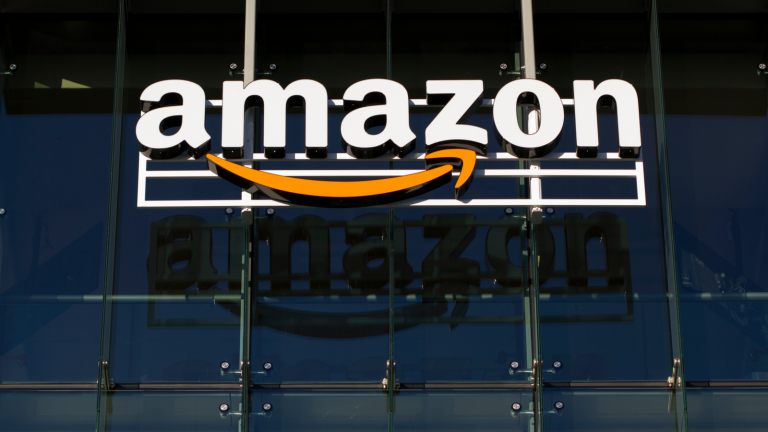Amazon (NASDAQ:AMZN) has not had a great run lately. Unfortunately, FAANG has not been able to buck the market’s overall selloff. A few of the components are holding up okay, but Meta (NASDAQ:META), Netflix (NASDAQ:NFLX) and AMZN stock are all badly underperforming the Nasdaq.
Unfortunately for Amazon, it’s not sitting in a good place. Inflation pressures are weighing on all parts of its business, while at the same time, supply chain issues are wreaking havoc as well. Granted, the e-commerce juggernaut is perhaps one of the best-situated companies to fight through the issues, but that doesn’t mean there hasn’t been an impact. Supply chain issues sap away potential revenue while rising costs are measured in the billions when a company like Amazon handles a lot of its own logistics.
Thankfully it has its cloud business — the largest in the industry — as well as its advertising unit. However, advertising will take a hit if and when the economy slows. It’s no wonder AMZN stock is down 30% from the 2022 high.
The question now becomes, is there value? Let’s dive in and take a closer look.
| AMZN | Amazon | $116.46 |
Valuing Amazon Is Not Easy
How exactly do you value this company, because there are an enormous number of moving parts?
First, there’s the e-commerce business. While the consumer remains relatively healthy — for now — retail sales are taking a hit as rising gas and food costs are cutting into discretionary spending. Additionally, inflation and supply chain problems worsen the situation for Amazon’s e-commerce business.
The cloud business is a workhorse for Amazon and from what we’ve heard from cloud and software-based businesses, spending remains robust and basically unaffected. That’s a bit of good news. So is Amazon’s Prime business, where it has more than 200 million customers.
Those customers pay an annual feel — in the U.S. it’s $138 per year — which generates substantial cash flow for Amazon. Then there’s valuing the moat that Amazon has built, essentially as one of the world’s largest cloud providers with an immense e-commerce model and a nearly unrivaled logistics network.
What type of premium do we assign to that? Well, that depends.
The company is currently valued at just north of $1 trillion and that’s after a 30% reduction in its share price. AMZN stock trades at about 52 times last year’s earnings, but almost 66 times next year’s estimate as the bottom line takes a hit.
That said, Amazon is forecast to generate $525 million in sales this year — up almost 12% — and more than $613 million next year — up about 17%.
To put it simply, some will find the share price retreat a discount in itself, green-lighting an “accumulation” approach or a dollar-cost average (DCA) approach to AMZN stock. Others will look at the price-to-earnings ratio and say, “no thanks.”
Trading AMZN Stock After the Split

Click to Enlarge
Why advocate for a DCA approach to AMZN stock? Well, fundamentals and moat aside, the stock is at a key inflection point on the chart.
Shares have been nearly cut in half, which is a good starting point anytime you’re talking about a high-quality business with strong assets. But when we look at the technicals, I see a stock that took almost two years to break out over the $100 to $102.50 area.
With AMZN stock now pulling back to this area, DCA-focused investors or market speculators may consider a long position with the stock retesting this major area. If it holds, one may look for a possible bounce back to the $125 level.
That’s near where the stock topped out ahead of the 20-for-1 stock split. Keep in mind, stock splits may create more demand for a particular stock, but they work much better as a bullish catalyst in a bullish market. Since we’re in a bear market — and because a stock split doesn’t change the actual value of the company — this catalyst has much less of an effect.
If support does not hold and AMZN stock breaks below $100 and fails to reclaim it, the Covid-19 low could be in play in the low-$80s. It’s hard to believe we could see something like Amazon go full circle back to the dark days of 2020, but it’s certainly possible under these conditions.
Bottom Line on AMZN Stock
Some investors will look at AMZN stock and prefer the financials and lower valuation of Apple (NASDAQ:AAPL) and Alphabet (NASDAQ:GOOGL, NASDAQ:GOOG). Others will look at Amazon and see its strong moat, solid long-term business and the discount on its stock.
Neither investor is wrong, but it’s up to the individual to decide which camp they fall into.
On the date of publication, Bret Kenwell did not have (either directly or indirectly) any positions in the securities mentioned in this article. The opinions expressed in this article are those of the writer, subject to the InvestorPlace.com Publishing Guidelines.
Bret Kenwell is the manager and author of Future Blue Chips and is on Twitter @BretKenwell.
